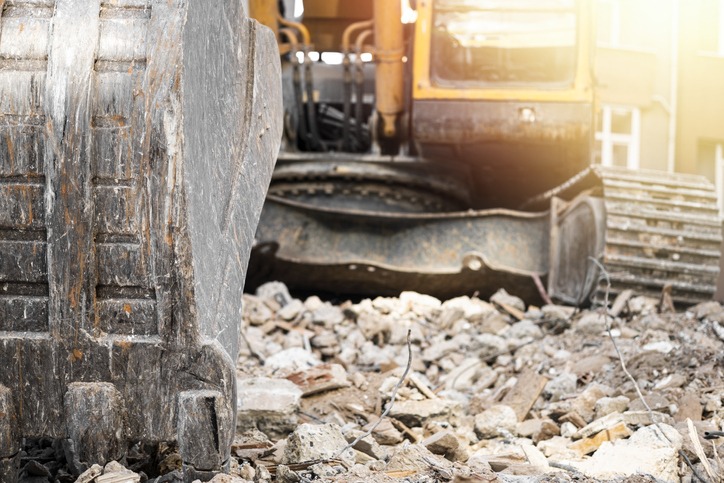Demolition projects involve the tearing down of existing structures to make way for new construction. When working in an industrial environment, there are skilled teams and hazardous materials professionals who are often tasked with the undertaking of large demolition projects. However, smaller teams are sometimes required to complete a demolition, and while these projects can be exciting, they can also be hazardous.
That is why it is important to remain aware of the potential worksite safety hazards before you begin your next demolition project, so that you can keep yourself, your coworkers, and your work environment safe. Here are 8 hazards you should consider before starting a demolition project.
1. Falling Objects
Debris from a demolition project has the potential to fall from high heights and cause injury or death. It is important to wear personal protective equipment (PPE) such as hard hats, safety glasses, and steel-toed boots when working in an area where there may be falling objects. Additionally, never work beneath elevated debris or equipment that could potentially fall.
2. Dust & Fumes
The dust created by a demolition project can contain dangerous particles that can cause respiratory issues if inhaled. Ensure that adequate ventilation is provided, hazardous materials assessments are conducted, and workers wear respirators while working in the area. Additionally, keep an eye out for any potentially flammable or explosive materials in the debris (such as asbestos or other harmful excess) as they may emit toxic fumes when disturbed.
3. Equipment Hazards
Heavy machinery used during a demolition project needs to be operated correctly and safely by experienced operators who understand how it works and what safety features are available on it, such as seatbelts. Also, ensure that workers know how to shut off power sources in case of an emergency.
4. Noise
Construction noise levels are often much higher than normal workplace levels, which can lead to hearing loss if not properly managed. Ensure that workers wear ear protection such as earplugs when operating noisy machinery or equipment and limit their exposure time with loud equipment whenever possible.
5. Electrical Hazards
When demolishing electrical systems or wiring, it is important to disconnect all power sources first before proceeding with the work so that no one gets electrocuted while handling exposed wires or cables during the demolition process. It is also important to check for any electrical hazards in walls and ceilings before cutting into them as sparks created by power tools could potentially ignite combustible materials inside them, such as insulation.
6. Fire Hazards
During a demolition project there are many potential fire hazards that need to be considered such as flammable liquids, combustible materials, and exposed wiring. Always keep fire extinguishers nearby and do not allow smoking on site as this could increase the risk of fire due to discarded cigarettes being ignited by sparks from power tools. Additionally, ensure that all personnel are trained on proper fire safety procedures prior to beginning work so they know what actions need taken in case of an emergency.
7. Confined Spaces
Confined spaces such as basements or attics need special consideration before entering due to their limited access points which could impair escape routes in case of emergency situations. Make sure you have adequate access points for entry/exit, provide adequate lighting, ensure proper ventilation, conduct hazardous materials assessments, use ladders instead of scaffolds wherever possible, and post signs warning people about entering these areas. Additionally, never enter these areas alone – always have someone else present just in case something goes wrong.
8. Falling from Heights
Falls from heights is another hazard associated with demolition projects which can result in serious injury or death if not properly managed. Make sure appropriate safety precautions are taken such as wearing harnesses, having guardrails installed around elevated areas, providing proper access points for personnel working at heights, and using ladders instead of scaffolding wherever possible.
Final Thoughts
Demolition projects can be exciting, but they also come with numerous risks which must be managed carefully if they want the job done safely and efficiently without any major incidents occurring. By following best practices outlined above such as wearing PPEs, having regular hazardous materials assessments conducted, avoiding confined spaces where possible, shutting off power sources beforehand, and using guard rails around elevated areas, industrial companies can go a long way towards preventing any serious accidents from happening on their next demolition job.

